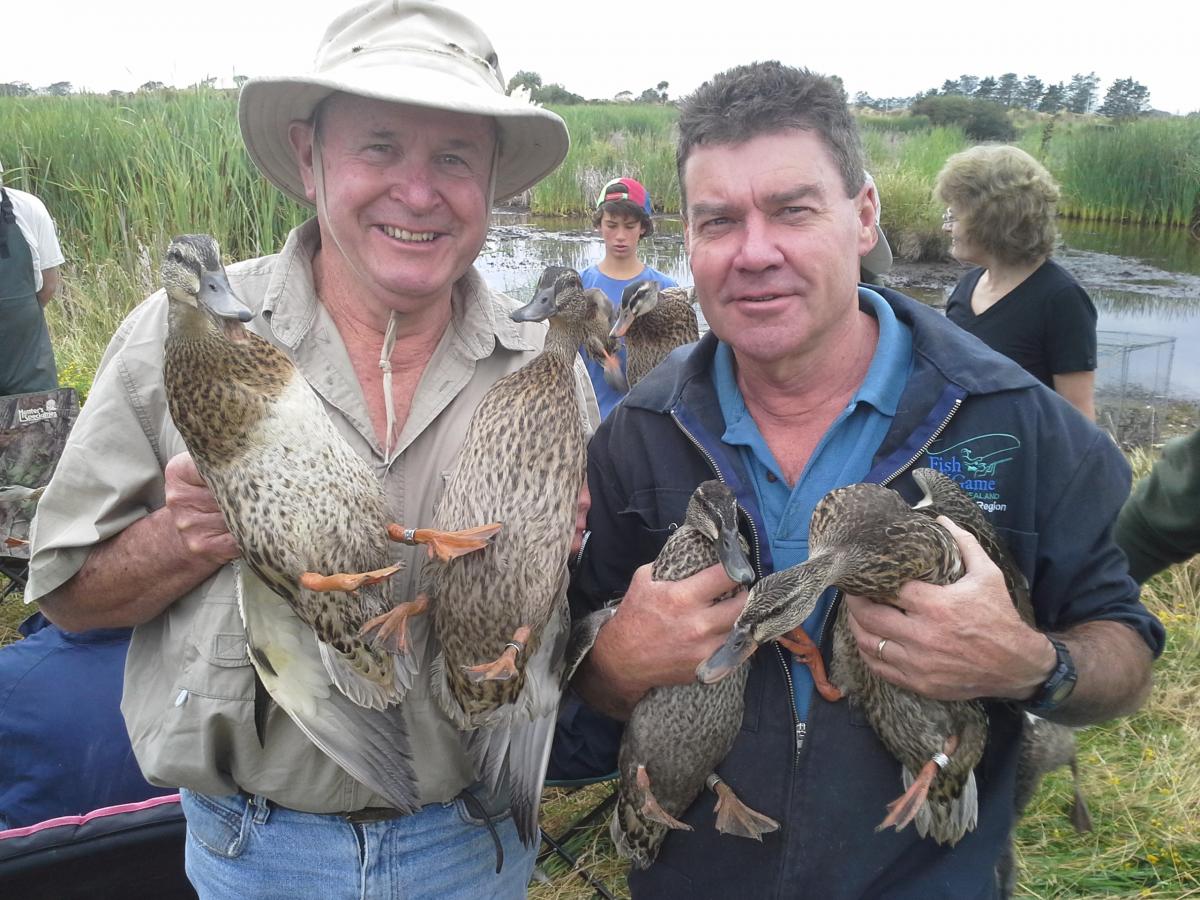Central North Island Fish & Game officers are hopeful of a better game bird season in May, after thousands of mallards have been trapped and banded around the North Island.
The work is carried out in the Bay of Plenty and East Coast, and the Auckland and Waikato regions. Areas which come under the strongest hunting pressure are normally trapped more intensively.
Eastern Senior Fish & Game officer Matthew Mc Dougall says so far this summer, well over 5000 birds have been banded.
“It appears that this year we’ve had a good breeding season which bodes well for hunters come the opening of the duck season on the first weekend in May.”
Mr Mc Dougall says juvenile ducks make up a large part of the hunter’s bag and “if there are plenty around hunters tend to do well.”
He says that last year’s banding programme turned up a long-distance flight by a mallard banded in the Hauraki district, which ended up more than 2000 kilometres away north of Noumea, capital of the French territory of New Caledonia. A woman whose husband shot the bird in a local swamp got in touch to say they’d recovered the bird.
“It wasn’t a one-off, it’s in fact the third time a bird has turned up in New Caledonia,” Mr Mc Dougall says. “Initially, we thought people were having us on.”
Also intriguing is how often some birds have been recaptured as part of the banding programme. One bird first banded in Galatea nine years ago, has now been recaptured on three subsequent occasions. “It shows that being trapped and banded doesn’t put the birds off a free feed.”
The banding information that hunters send in provides some crucial data but of course, it isn’t looked at in isolation. “It’s just one of the tools we are using to help assess what different populations are doing.”
Mr Mc Dougall says banding provides data on age and sex ratios, and survival rates in addition to where birds have dispersed to.
Fish & Game is again calling on hunters to return band details from birds they shoot, once the season gets underway.
BACKGROUND:
The annual banding now in its 19th year involves capturing the ducks in baited ‘crayfish-type’ traps which let them in, but not out again. Coded bands are attached to their legs before they are released. This provides information to compare with the previous breeding season, which helps in setting duck shooting limits.
Fish & Game uses banding to find out survival rates for juveniles and adults, males and females.
Recovery of a band also means the distance between the banding site and recovery site can be calculated, as can the time elapsed since banding - giving an indication on how long the bird lived for.
Staff from the Ministry for Primary Industries use the banding sessions as an opportunity to test the birds for diseases such as avian ‘flu.
- Media release from Senior Fish & Game Officer Matthew Mc Dougall, tel 07-3575501
 Pictured: Fish & Game Chairman Lindsay Lyons and Eastern Manager Andy Garrick banding near Te Puke.
Pictured: Fish & Game Chairman Lindsay Lyons and Eastern Manager Andy Garrick banding near Te Puke.
28 August, 2014